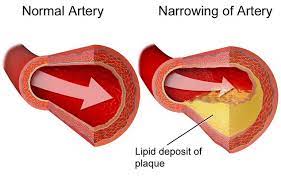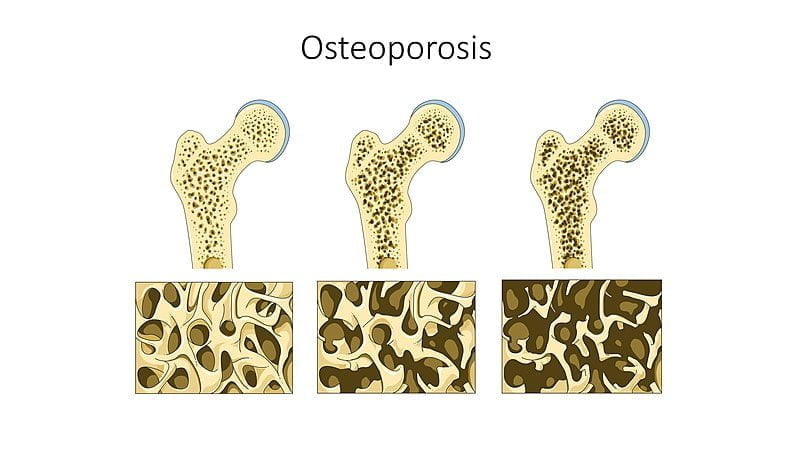
Share this post!
A Course In Nutrition: Learning Your A, B, C’s
Welcome back to Part 12 of our multiple-part series on Vitamins.
In the last blog of this series, we talked about Vitamin E, commonly known as Alpha Tocopherol in the supplement world.
We highlighted:
- the importance of Vitamin E
- what health challenges occur when there is a deficiency
- what foods are packed with this very important vitamin
- and, an easy recipe to make sure you’re eating enough Vitamin E daily
Vitamin K
As with all the other vitamins we’ve highlighted, Vitamin K plays many roles in optimizing health.
In today’s blog, we will talk about Vitamin K, a fat-soluble vitamin, usually designated as Vitamin K1 and K2.
Before 2006, the USDA didn’t even distinguish the difference in Vitamin K1 from K2. Since Both K1 and K2 are quinones, as you can see by their names, scientists hadn’t really discovered their vast differences. Here is a brief breakdown:
- Vitamin K1 – known as phylloquinone
- Found in green, leafy vegetables
- Responsible for clotting our blood
- Vitamin K2 – known as a variety of menaquinones (MK-4 and MK-7 get the most attention)
- Found in animal-based foods
- MK-4 – Sourced from animal products
- Organ meats
- Pasture-raised dairy
- Pasture-raised egg yolks
- Found in fermented foods
- MK-7 – Sourced from bacterial fermentation
- Sauerkraut
- Hard and soft cheeses
- Natto
- MK-7 – Sourced from bacterial fermentation
- MK-4 – Sourced from animal products
- Found in animal-based foods
Since part of Vitamin K2 is made by healthy bacteria in your digestive tract, you can understand why eating fermented foods and having a healthy gut is so important.
- Responsible for healthy bone formation
- Calcium gets all the media attention, but without good K2 production, your bones can’t be healthy or strong.
Vitamin K is a fat-soluble vitamin, so it requires consumption of healthy fats, for optimal absorption. Additionally, it’s important to have a healthy liver and gall-bladder to absorb this vitamin.
Vitamin K1
Vitamin K1 is often poorly absorbed. Most people only absorb about 5-15% of it when eating their green leafy veggies, like spinach. Make sure to have your healthy fats, like a fresh avocado or a bit of olive oil, with your veggies to enhance absorption.
As mentioned above, K1 is responsible for aiding in clotting your blood. In the absence of this vitamin, the clotting factors are not properly activated and clot formation is compromised. If you have a cut, even as small as a nick, consequences could be dire without your blood clotting quickly and effectively.
It’s important to understand that, while K1 plays a key role in coagulation (clotting), it also plays a balanced role in anti-coagulation. K1 activates different factors in our blood to clot when necessary and to ‘thin the blood’ when necessary, too.
Possible Contraindications for Vitamin K
Some people are at increased risk of forming blood clots, which could block the flow of blood in the heart, brain, or lungs, resulting in a heart attack, stroke, or pulmonary embolism. Surprisingly, abnormal clotting is not related to excessive vitamin K intake, and there is no known toxicity associated with vitamin K1 or vitamin K2.
However, there are some medications that purposefully interfere with blood clotting mechanisms, and doctors tend to discourage people from eating foods rich in this vitamin. Some anticoagulants, such as warfarin, coumadin and heparin, inhibit coagulation by blocking the action of vitamin K.
Large quantities of dietary or supplemental vitamin K can decrease the anticoagulant effect of warfarin, Coumadin and heparin. Oftentimes, patients taking these drugs are cautioned against consuming variable quantities of vitamin K. However, experts now advise a reasonably constant dietary intake of vitamin K that meets current dietary recommendations (120 mcg/day) for patients taking warfarin, Coumadin and heparin.
Vitamin K2
The menaquinones in Vitamin K2 play very different roles in your health, though it has a lot to do with efficiently and effectively moving calcium to good and safe places in your body.
Most everyone has heard that calcium is important for strong teeth and bones, but have you ever thought about what happens if calcium gets into places it shouldn’t be? This can cause other tissues to calcify.

Vitamin K for Heart Health
When blood vessels calcify, this is called atherosclerosis and is a form of heart disease. Foods rich in Vitamin K2 can help move calcium from blood vessels back to bone, or to kidneys for proper excretion. However, sometimes too much calcium can calcify the kidneys, too, not allowing for proper excretion. This can cause many problems, including kidney stones and/or high blood pressure.
Dr Mercola recently came across some research related to cholesterol-lowering drugs and Vitamin K. He said, “Nearly 25 percent of Americans over the age of 45 are taking cholesterol-lowering statin drugs, despite the high risks of the drugs. In addition to other side effects, statins inhibit the production of vitamin K2. A study published in Expert Review of Clinical Pharmacology revealed statins may actually stimulate the development of atherosclerosis and heart failure, and one of the mechanisms by which this occurs is the inhibition of the synthesis of vitamin K2, which protects your arteries from calcification.”

Osteoporosis and Vitamin K
Another place where Vitamin K2 really shines is in improving osteoporosis. This can be a devastating ailment for many post-menopausal women. Some fascinating studies were done in 2006 that found taking supplemental K2 had profound effects on bone health. 12 of the 13 clinical trials showed ‘significant reduction of hip fractures, vertebral fractures and all non-vertebral fractures’. This is powerful information.
These studies were so profound that Japan, other Asian countries and European Food Safety Authority have been authorized to use 45 mg of Vit K2 (MK-4) as a treatment for osteoporosis. Sadly, the FDA has not authorized that health claim in the US. Luckily, you now have this information available to you.
Guidelines For Getting Enough Vitamin K
The FDA tells us that most U.S. diets contain an adequate amount of vitamin K, which is 120 mcg/day for people 4 years old and older. Their data further states that children and teens aged 2–19 years average a daily vitamin K intake from foods at 66 mcg. In adults, aged 20 and older, the average daily vitamin K intake from foods is 122 mcg for women and 138 mcg for men.
If you do the math, it looks like the population aged 2-19 does not meet their needs with foods alone. And, in adults, it looks like women barely reach their threshold of minimum requirements.
Adding the foods listed below, along with a good multi-vitamin will help ensure meeting your daily requirements.
Getting Enough Vitamin K
The three leafy greens with the highest level of Vitamin K1 include:
- Collard Greens
- 530 mcg/serving
- Turnip Greens
- 430 mcg/serving
- Spinach
- 145 mcg/serving
The three foods with the highest level of Vitamin K2 include:
- Natto
- 850 mcg/serving
- As you can see, natto is the clear winner.
- Chicken Breast
- 13 mcg/serving
- Chicken Liver (or ground beef)
- 6 mcg/serving
Final Thoughts
Well, you’ve reached the end of our series ABC’s of Vitamins. If you’ve been following along from the beginning, you likely feel like a ‘mini-nutritionist’. And, hopefully, I’ve sparked your interest enough to want to learn more about the role of vitamins, nutrition and health. Nutrition Therapy Institute has a great website with lots of valuable information to keep you moving forward on your journey.
I’ll close this blog the same way I’ve closed the others in this series…..with a yummy (and easy) recipe to improve your daily dose of Vitamin K.
I’m looking forward to tackling other health topics in upcoming blogs.
Vitamin K-Rich Recipe
As much as I’d like to give you a recipe that includes natto, it’s an acquired taste. One that needs to be built up to. I would encourage you to be brave and slowly add it in to your rotation. In the meantime, here’s a recipe that you can sink your teeth into. Bon Appetit
Cajun Chicken and Collard Greens
Ingredients
- 4 tablespoons olive oil
- 4 6-ounce boneless, skinless chicken breasts
- 2 teaspoons blackening or Cajun seasoning
- kosher salt and black pepper
- 4 cloves garlic, sliced
- 1 red bell pepper, sliced
- 1 bunch collard greens, stems discarded and leaves cut into strips (about 10 cups)
- 1 15-ounce can black-eyed peas, rinsed
Directions
Step 1
Heat 1 tablespoon of the oil in a large skillet over medium heat. Season the chicken with blackening seasoning, ½ teaspoon salt, and ¼ teaspoon black pepper.
Step 2
Cook the chicken until golden brown and cooked through, 6 to 7 minutes per side. Transfer to plates.
Step 3
Meanwhile, in a second skillet, heat the remaining 3 tablespoons of oil over medium-high heat.
Step 4
Add the garlic and bell pepper to the second skillet and cook, tossing frequently, until beginning to soften, 2 to 3 minutes.
Step 5
Add the collard greens, ¾ teaspoon salt, and ¼ teaspoon pepper and cook, tossing, until just tender, 5 to 7 minutes.
Step 6
Stir in the black-eyed peas and cook until heated through, for 1 to 2 minutes more. Serve with chicken.
All the credit for this recipe goes to Kate Merker of Real Simple Foods. She adds lots of ‘soul’ to her foods. You will definitely enjoy this dinner.
About the author: Dr Becky Spacke is a course instructor at Nutrition Therapy Institute. Additionally, she has a private practice focused on minimizing the risk of developing Alzheimer’s Disease as a qualified ReCODE practitioner.
Resources:
https://ods.od.nih.gov/factsheets/VitaminK-HealthProfessional/
https://efsa.onlinelibrary.wiley.com/doi/10.2903/j.efsa.2009.1228 – European food safety Vit K
https://pubmed.ncbi.nlm.nih.gov/18722618/ – Vit K and coronary calcification
Images: Bit245/istock.com; Image by Laboratoires Servier is licensed under CC BY-SA 3.0; Image by Blausen.com is licensed under CC BY-SA 3.0
Share this post!




















